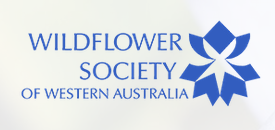
New Holland Honeyeater feeding on a Banksia coccinea. Image taken from: http://birdway.com.au/meliphagidae/new_holland_honeyeater/source/new_holl_honeyeater_38319.htm
Today while scrolling through the news articles of the Australian Geographic website I found this article on a recent study which looked at red flowers and bird pollination.
The study was conducted by researchers from Monash and RMIT Universities in Melbourne and it suggested that certain plants have evolved to produce the colours that are most distinctive and visible to native birds.
In this study the genetic makeup of over 200 native Australian flowering plants was analysed to try and uncover any clues about their evolution. Previous studies have shown that flowering plants evolved to attract bees. This study suggests that as the plants moved towards red colouring they also shifted from insect pollinators to bird pollinators. It was shown through mapping the history of flower evolution that red flowers pollinated by birds evolved from flowering plants that used to be insect pollinated.
A potential advantage of shifting to bird pollinators is that some insect pollinators can be inefficient and using red flowers to attract bird pollinators enables plants to efficiently get pollen and also avoid nectar being stolen by insects.
This study is especially important in Australian because Australia has more bird pollinators than any other continent.
Some examples of red flowering plants in Western Australia that are bird pollinated are:
- The lesser bottle brush – Callistemon phoeniceus
- Red swamp banksia – Banksia occidentalis
- Red combs – Grevillea beardiana
The idea that different flower colours attract different pollinators is not a new idea; however the evidence produced by this study is new and quite interesting. Unfortunately the paper for this study cannot be viewed online for free however you can check out the abstract and the Australian Geographic article online.





